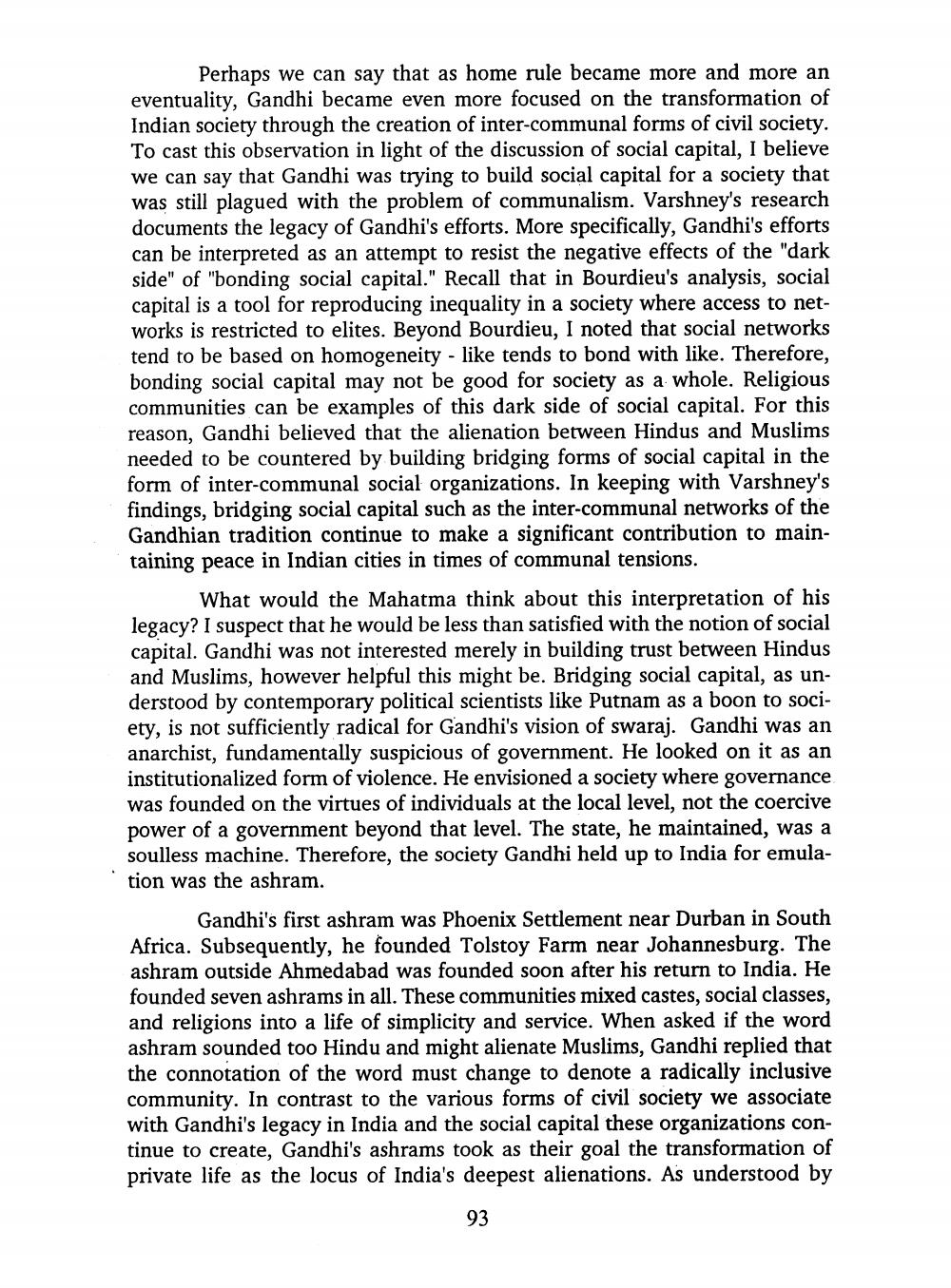________________
Perhaps we can say that as home rule became more and more an eventuality, Gandhi became even more focused on the transformation of Indian society through the creation of inter-communal forms of civil society. To cast this observation in light of the discussion of social capital, I believe we can say that Gandhi was trying to build social capital for a society that was still plagued with the problem of communalism. Varshney's research documents the legacy of Gandhi's efforts. More specifically, Gandhi's efforts can be interpreted as an attempt to resist the negative effects of the "dark side" of "bonding social capital." Recall that in Bourdieu's analysis, social capital is a tool for reproducing inequality in a society where access to networks is restricted to elites. Beyond Bourdieu, I noted that social networks tend to be based on homogeneity - like tends to bond with like. Therefore, bonding social capital may not be good for society as a whole. Religious communities can be examples of this dark side of social capital. For this reason, Gandhi believed that the alienation between Hindus and Muslims needed to be countered by building bridging forms of social capital in the form of inter-communal social organizations. In keeping with Varshney's findings, bridging social capital such as the inter-communal networks of the Gandhian tradition continue to make a significant contribution to maintaining peace in Indian cities in times of communal tensions.
What would the Mahatma think about this interpretation of his legacy? I suspect that he would be less than satisfied with the notion of social capital. Gandhi was not interested merely in building trust between Hindus and Muslims, however helpful this might be. Bridging social capital, as understood by contemporary political scientists like Putnam as a boon to society, is not sufficiently radical for Gandhi's vision of swaraj. Gandhi was an anarchist, fundamentally suspicious of government. He looked on it as an institutionalized form of violence. He envisioned a society where governance was founded on the virtues of individuals at the local level, not the coercive power of a government beyond that level. The state, he maintained, was a soulless machine. Therefore, the society Gandhi held up to India for emulation was the ashram.
Gandhi's first ashram was Phoenix Settlement near Durban in South Africa. Subsequently, he founded Tolstoy Farm near Johannesburg. The ashram outside Ahmedabad was founded soon after his return to India. He founded seven ashrams in all. These communities mixed castes, social classes, and religions into a life of simplicity and service. When asked if the word ashram sounded too Hindu and might alienate Muslims, Gandhi replied that the connotation of the word must change to denote a radically inclusive community. In contrast to the various forms of civil society we associate with Gandhi's legacy in India and the social capital these organizations continue to create, Gandhi's ashrams took as their goal the transformation of private life as the locus of India's deepest alienations. As understood by
93




